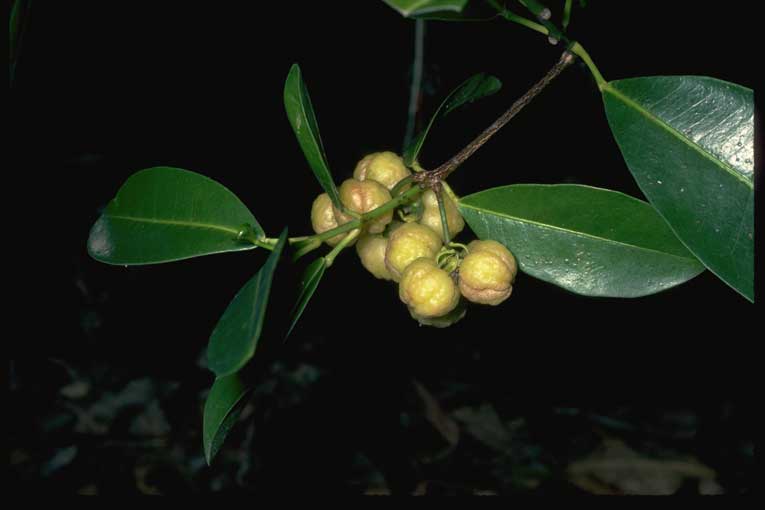Scented Acronychia on:
[Wikipedia]
[Google]
[Amazon]
 ''Acronychia littoralis'', commonly known as the scented acronychia, is a species of small tree that is
''Acronychia littoralis'', commonly known as the scented acronychia, is a species of small tree that is
Image:Acronychia littoralis - leaves.JPG, Juvenile leaves
Image:Acronychia littoralis - trunk.JPG, Trunk
Image:Acronychia littoralis - leaves & buds.JPG, Flower buds and leaves
Image:ScentedAcronychia-flowers.JPG, Flowers and leaves
Image:ScentedAcronychia-flowers2.JPG, Flowers and leaves
Image:Acronychia littoralis in flower.JPG, Flowers and leaves
Image:Acronychia littoralis habit.jpg, Habit in Coffs Harbour Botanic Garden
{{Taxonbar, from=Q956143
littoralis
Flora of New South Wales
Flora of Queensland
Plants described in 1984
Taxa named by Thomas Gordon Hartley
Taxa named by John Beaumont Williams
 ''Acronychia littoralis'', commonly known as the scented acronychia, is a species of small tree that is
''Acronychia littoralis'', commonly known as the scented acronychia, is a species of small tree that is endemic
Endemism is the state of a species being found only in a single defined geographic location, such as an island, state, nation, country or other defined zone; organisms that are indigenous to a place are not endemic to it if they are also foun ...
to eastern coastal Australia. It has simple, glabrous
Glabrousness () is the technical term for a lack of hair, down, setae, trichomes, or other such covering. A glabrous surface may be a natural characteristic of all or part of a plant or animal, or be due to loss because of a physical condition, ...
, elliptic to egg-shaped leaves, small groups of yellow flowers and egg-shaped to more or less spherical creamy-yellow fruit.
Description
''Acronychia littoralis'' is a tree that typically grows to a height of and has a straight, grey, cylindrical trunk. The leaves are glabrous, arranged in opposite pairs, broadly elliptical to broadly egg-shaped with the narrower end towards the base, mostly long and wide on a petiole long. The flowers are mainly arranged in leafaxil
A leaf (: leaves) is a principal appendage of the stem of a vascular plant, usually borne laterally above ground and specialized for photosynthesis. Leaves are collectively called foliage, as in "autumn foliage", while the leaves, stem, fl ...
s in cymes
In botany, an inflorescence is a group or cluster of flowers arranged on a plant's stem that is composed of a main branch or a system of branches. An inflorescence is categorized on the basis of the arrangement of flowers on a main axis ( ped ...
long, each flower on a pedicel long. The four sepal
A sepal () is a part of the flower of angiosperms (flowering plants). Usually green, sepals typically function as protection for the flower in bud, and often as support for the petals when in bloom., p. 106
Etymology
The term ''sepalum'' ...
s are wide, the four petal
Petals are modified leaves that form an inner whorl surrounding the reproductive parts of flowers. They are often brightly coloured or unusually shaped to attract pollinators. All of the petals of a flower are collectively known as the ''corol ...
s yellow and long and the eight stamen
The stamen (: stamina or stamens) is a part consisting of the male reproductive organs of a flower. Collectively, the stamens form the androecium., p. 10
Morphology and terminology
A stamen typically consists of a stalk called the filament ...
s alternate in length. Flowering occurs from February to March and the fruit is a fleshy creamy yellow, egg-shaped to more or less spherical drupe
In botany, a drupe (or stone fruit) is a type of fruit in which an outer fleshy part (exocarp, or skin, and mesocarp, or flesh) surrounds a single shell (the ''pip'' (UK), ''pit'' (US), ''stone'', or ''pyrena'') of hardened endocarp with a seed ...
long with four lobes separated by shallow fissures.
Taxonomy
''Acronychia littoralis'' was first formally described in 1984 by Thomas Hartley and J.B. Williams in the journal '' Brunonia'' from specimens collected by J.B. Williams near Brunswick Heads in 1979.Distribution and habitat
Scented acronychia grows in rainforest within of the coast betweenFraser Island
K'gari ( , ), also known by its former name Fraser Island, is a World Heritage-listed sand island along the south-eastern coast in the Wide Bay–Burnett region of Queensland, Australia. The island lies approximately north of the state capi ...
in Queensland and Iluka in New South Wales.
Conservation status
This acronchyia is classified as "endangered" under the Australian Government ''Environment Protection and Biodiversity Conservation Act 1999
The ''Environment Protection and Biodiversity Conservation Act 1999'' (Cth) is an Act of the Parliament of Australia that provides a framework for protection of the Australian environment, including its biodiversity and its natural and cult ...
'', the New South Wales Government '' Biodiversity Conservation Act 2016'' and the Queensland Government ''Nature Conservation Act 1992
The ''Nature Conservation Act 1992'' is an act of the Parliament of Queensland, Australia, that, together with subordinate legislation, provides for the legislative protection of Queensland's threatened biota.
As originally published, it prov ...
''. The main threats to the species include inappropriate use of four-wheel drive vehicles, weed invasion and salt burn at exposed sites.
References
Gallery